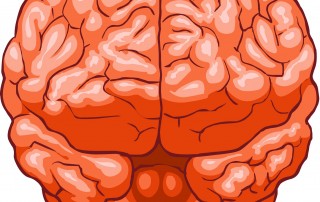“Sometimes when I feel overwhelmed by my stupid life, I get the urge to hurt myself. I take anything sharp that I can find and go to the bathroom. I cut myself on my abdomen, where no one can see it. I don’t even really feel the pain, it just feels kind of numb. If my parents ever found out, they would lose it.” Self-harm is not a new phenomenon but it is becoming a more prevalent topic of conversation with the help of social media. As with anything, the more exposure it gets, the more armchair psychologists are willing to authoritatively speculate on its causes and what can be done about it. We hear everything from, “they’re just trying to get attention” to “they’re seriously crazy” to “it’s all just an act”. But what is the truth about self-harm? Why, when a person is already hurting, would they want to hurt themselves even further? The answer is actually much simpler than it seems. If a person is cutting, burning or hitting themselves, it may be a cry for attention, but not if they are doing so in an area that they keep hidden from view. That would defeat the […]
The Sun and the Shadow: Making Sense of Inconsistent Behavior
My Grade 7 year at Salmo Elementary School was a year of great highs and profound lows. I discovered music for the first time, real popularity, great embarrassment, and of course, girls. Well actually I discovered girls in Kindergarten. That was also the first year that I was involved in any kind of athletic endeavour. I was tall for my age, as were a few of my friends and so when the school formed a basketball team and we played against other elementary schools we dominated. When you have three kids who are almost 6 feet tall in grade 7 and the hoops are only 8 feet tall, it is a recipe for disaster for the other teams. I tried all sports that year as they came up on the calendar, too naïve to realize that most people aren’t good at everything. The sport that was probably the worst match for me physically and mentally was cross-country running. This didn’t stop me from joining the team, of course; any excuse to get out of school or do anything extracurricular was something I would gladly sign up for, even if it meant limping along, drenched in sweat, wanting to puke, while […]
Complex Trauma: When the Whole is More Painful than the Sum of its Parts (PART 2)
Attachment Injuries Now that we have a rudimentary understanding of the necessity for, and basis of attachment behavior, we can begin to discuss attachment injuries and their effects. The term “attachment injury” refers to trauma that occurs within the context of a relationship. In order to understand the impact of relational trauma, consider an analogy from the field of physiology. Lessons From Physiology Proprioception is the body’s sense of where it is in space. It is the cumulative interpretation of the body’s various internal and external sensory systems that allow it to have an accurate assessment of the external enivronment. In layman’s terms, it is the body’s sense that allows a person to walk up the stairs or type at a keyboard without the necessity of visual information. When areas of the body are damaged or injured, this vital sensory ability is one of the first casualties. Musculoskeletal injuries result in impaired functioning of this vital sensory feedback system. This results in the increased likelihood of future injury, as the body has a reduced kinesthetic (body movement) awareness of the injured limb or joint. The parallels between this sensory system and the attachment system are easy to see. Attachment theorists […]
Complex Trauma: When the Whole is More Painful than the Sum of its Parts (PART 1)
Post-Traumatic Stress Disorder Post Traumatic Stress Disorder (PTSD) is diagnosed when an individual displays a cluster of symptoms that include various manifestations of the following: dissociation (feeling removed from reality), re-experiencing (flashbacks), and increased arousal (heightened stress response). In order for a diagnosis of PTSD to occur, however, these symptoms need to be as a result of the individual having been directly exposed to an event that threatened their life and/or safety or that of another individual. This criterion is known as the A1 criterion, since it is the primary criterion that must be present in order for diagnosis to occur. Amongst the general population, 7-8% of people will end up with PTSD at some point in their life. Within certain groups of people, however, such as individuals with substance-use disorders, the rate of diagnosis is much higher. For example, in one sample of substance-abusing psychiatric patients, researchers found that 90% had experienced physical/sexual assault and at least 50% met the diagnostic criteria for crime-related PTSD. However, there is a new direction of understanding with regard to trauma-related stress reactions; it is referred to as complex PTSD (CPTSD). Individuals in this category meet all of the same diagnostic criteria as […]
Facebook for Neurons: The Science of Anxiety
How to Change The Past
One of the most frequently used lines of false consolation that I hear is “you can’t change the past”. Usually this bit of indispensable wisdom is offered as a word of advice when someone is describing the impact of some negative event from their history, something that they wish had never happened and often something that continues to affect them to this day. Of course, this advice and apparent statement of the obvious is rarely helpful, which is not surprising if we look at the gist of this rejoinder. Let’s say you run breathless to the neighbour’s house, pounding on the door. They open the door and ask what’s going on. You tell them that there’s been a terrible accident and you need them to call an ambulance because you think your brother is dead. I don’t think anyone would feel justified or even attempt to rationalize a response such as, “Well, it’s in the past. You can’t change the past. You just have to let it go and get over it.” We would expect that person to offer help, to repair whatever damage had been done, within reason and their capability. Of course we wouldn’t expect them to take […]
From Shame to Compassion: A How-To Guide to Transforming Pain into Progress
The purpose of this post is to introduce a new way of thinking about problematic behavior. Many of us struggle to curb thoughts or behaviors that are ineffective at best and destructively corrosive at worst. We try and try again, only to meet with failure. Most of us throw our hands up and either set about resigning ourselves to the seemingly inevitable disappointing outcome of our existence, or continue to push against the same brick wall, using the same approach that has already proven so ineffective. This is the cycle of pain. Kathryn Schulz, journalist and author spoke at a TED conference about the experience of being wrong. She asked participants in the audience to describe how it felt to be wrong. Predictable answers ensued, focusing on the theme of embarrassment or similar emotions. She then pointed out that this was the experience of discovering that you have made a mistake, not the experience of actually making the mistake. She stated that the actual act of being wrong carries with it no emotion of its own; it only carries the emotion and meaning that we give to it. I would take Schulz’s idea a step further and point out that […]
The Top Six Barriers to Seeking Help
oday I’m going to be addressing the top six reasons why people who need help from a counsellor are reluctant to reach out and begin the process. These reasons are gleaned from my years of experience working with people who, after meeting, have asked themselves the question, “Why did I wait so long?” Time Most people would probably describe themselves as busy. Many of us actually are. We may have multiple jobs, multiple hobbies, and multiple children, and all of these entail multiple demands. However, if we take a good look at our schedules, we may find that a good percentage of our “busy” time could be spent much more productively. While I was working my way through university, I was employed by my school’s athletic department as an Academic Coach. Basically, my job was to help the student athletes avoid losing their academic eligibility to play for the sports teams. At the beginning of each semester, I would sit down with each athlete from each team and go over their course schedule, help them set goals, and if necessary teach them study skills and time-management skills. The most common reason I heard from the students to explain academic problems […]
The Hidden Hero: What Harry Potter, Susan Boyle, and Oprah Winfrey Tell Us About Attachment
hen I was younger, I used to wander off into a fantasy land where I was loved and important. In my fantasy, everyone was grateful for my existence and was glad to know me or even associate with me. I don’t think I was alone in this fantasy but it begs the question, why was this my ultimate dream? What does it say about my perception of reality? And most importantly, what does any of this have to do with Harry potter? Harry Potter books, penned by one-time struggling single mom JK Rowling, are reported to have sold more than 450m copies worldwide. Consequently, Rowling’s financial status has grown from welfare recipient to billionaire. Perhaps seeing the success of the Potter series, other authors have built upon its framework. Series revolving around Percy Jackson and Charlie Bone have both capitalized on the same theme. However, despite the wild success of Harry Potter, Percy Jackson, and other similar series, they were not the first to exploit this theme. Earlier film series such as Star Wars also capitalized on what seems to be a societal resonance with the story of someone once thought to be unimportant, who in fact possesses unique gifts […]
Validating Your Brain (Part 2)
Read Part 1 here Keep in mind that your brain’s task is to survive the moment, not the long-term. Without fail, the automatic behaviors that our brain engages in are accomplishing this task. However, due to its lack of perspective, the brain does not have the ability to coordinate momentary survival with long-term survival. So when your brain is acting, thinking, and feeling on your behalf, what does it think is happening? When we experience automatic behavioral responses, what is the brain trying to tell us? Think of the following example. The next time you feel an itch on your skin (which will be fairly soon, given that I have now invited you to think about it), try to physically look at the area of your skin that is itchy but DO NOT ITCH IT! Just look at the itchy place. If you can’t physically see it, try to visualize it in your mind as vividly as possible. You may even want to visualize yourself itching it. I can almost guarantee that devoid of any foreign substance interference, if the itch is generated by your brain, looking at it alone will be sufficient intervention to remove it. Give it a […]











Recent Comments